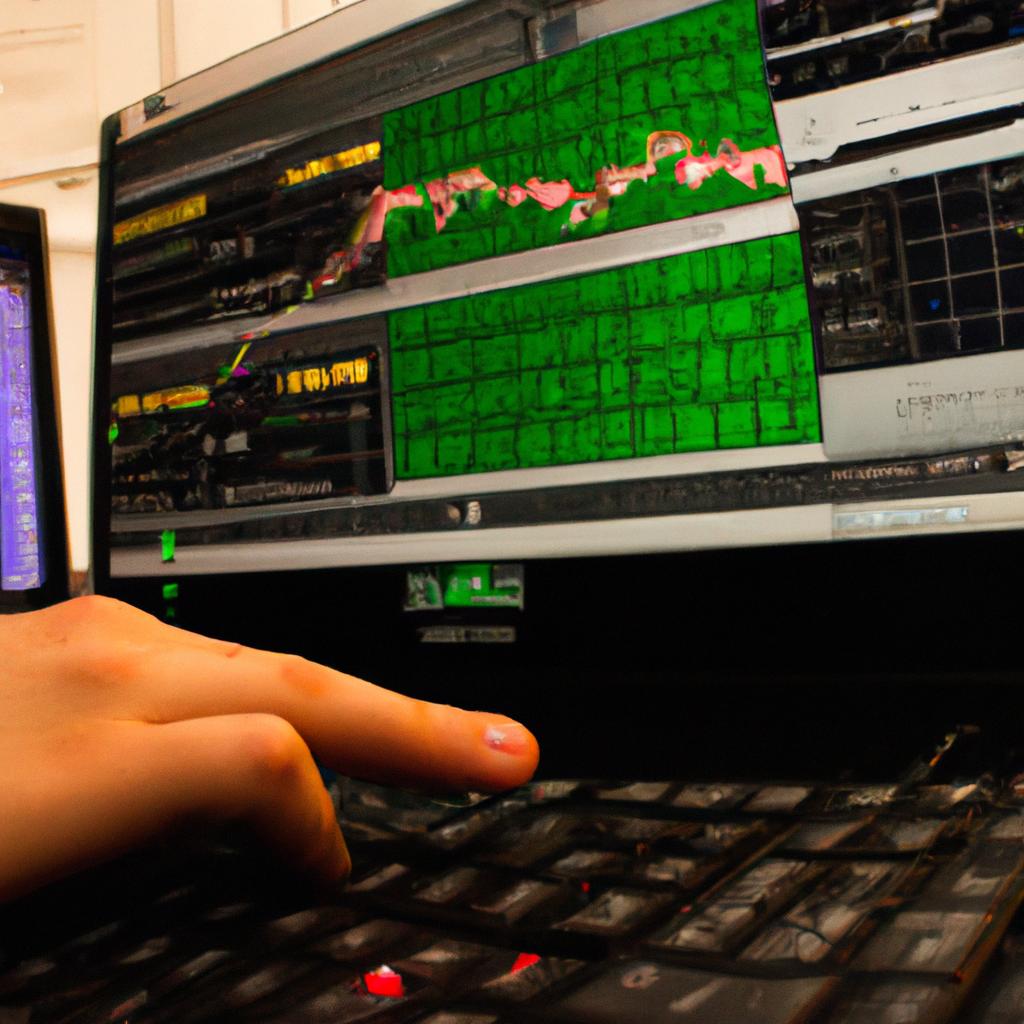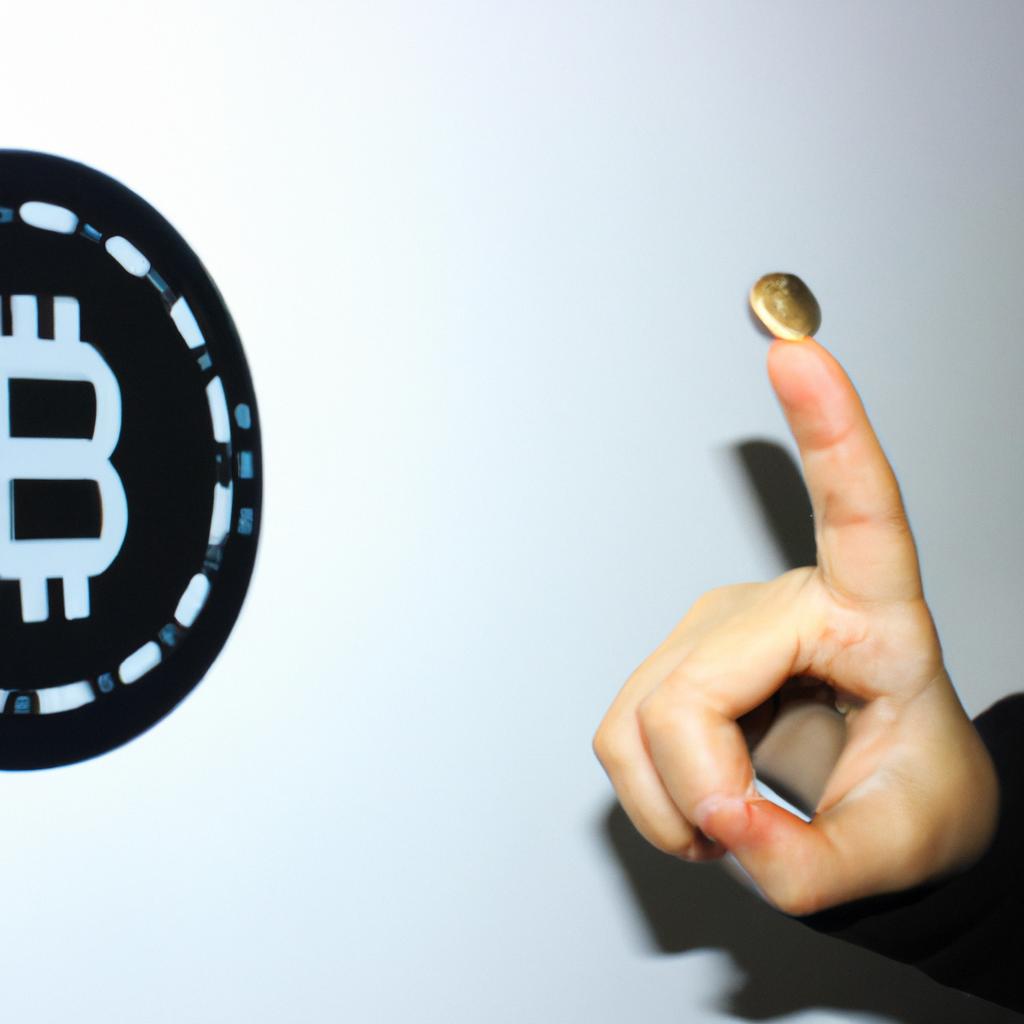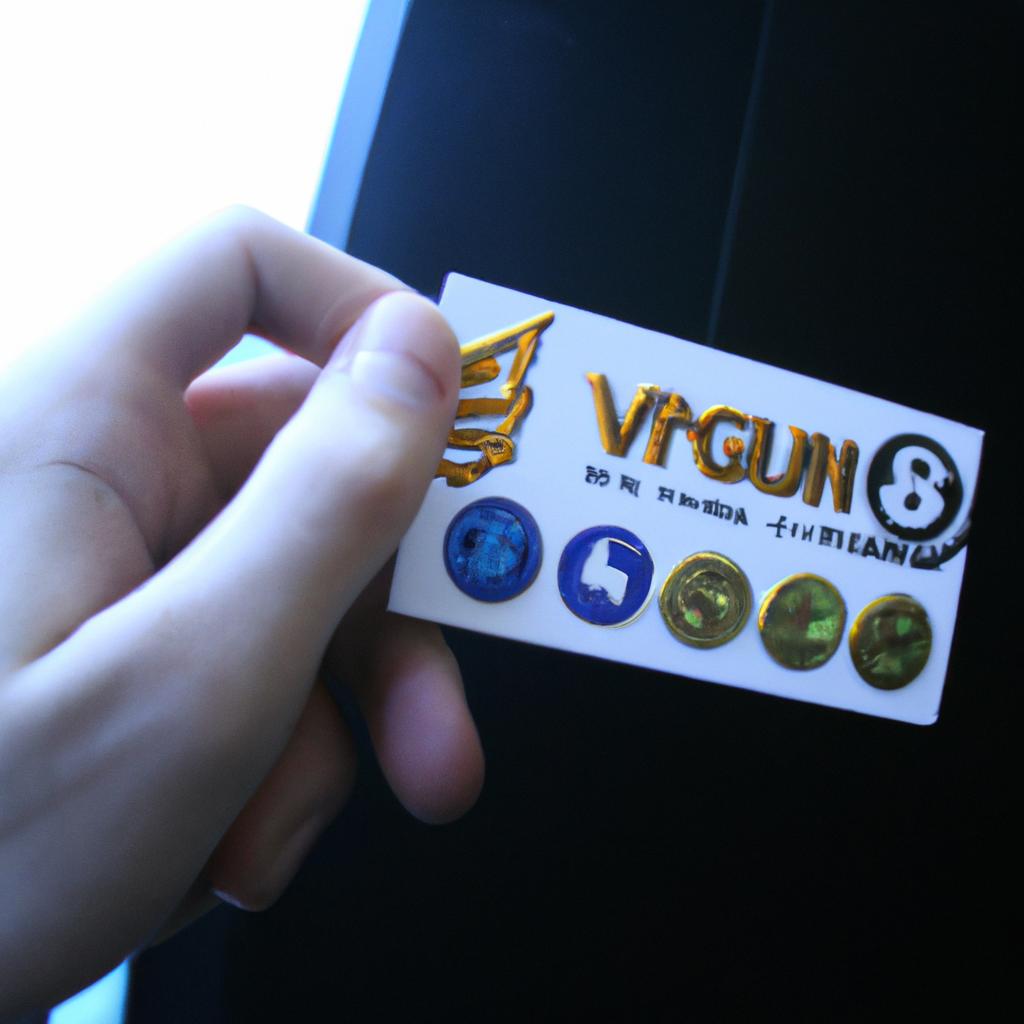Online games have become a popular form of entertainment and social interaction, attracting millions of players worldwide. Amidst the engaging gameplay and immersive virtual worlds lies an intriguing aspect that often goes unnoticed – economic simulations. These simulations create virtual economies within the game world, where players can engage in various economic activities such as trading, crafting, and resource management. One notable example is the game “World of Warcraft,” which features a complex virtual economy with its own supply and demand dynamics.
Economic simulations in online games offer a unique opportunity to study and analyze how individuals interact within virtual marketplaces. By examining these simulated economies, researchers gain insights into real-world economic phenomena such as price formation, consumer behavior, and market efficiency. The intricate interplay between players’ decisions and the underlying game mechanics provides a fascinating setting for studying economic principles in action.
Understanding the intricacies of virtual economies not only sheds light on human behavior but also has practical implications beyond gaming. For instance, governments around the world are increasingly turning their attention to regulating cryptocurrencies like Bitcoin, which operate similarly to virtual currencies in online games. Analyzing economic simulations can therefore provide valuable lessons for policymakers grappling with emerging digital financial systems.
In this article, we will delve deeper into the concept of economic simulations in online games and explore how they can be used as a tool for economic research and analysis. We will examine the key features of virtual economies, including supply and demand dynamics, price discovery mechanisms, and player behavior. Additionally, we will discuss the challenges and limitations of studying these simulated economies and highlight some notable research findings in this field.
Furthermore, we will explore the potential applications of studying virtual economies beyond gaming. From understanding consumer behavior to predicting market trends, the insights gained from economic simulations can be applied to real-world scenarios such as marketing strategies, financial forecasting, and policy-making.
Lastly, we will touch upon the ethical considerations surrounding virtual economies in online games. As players invest significant time and resources into these virtual worlds, questions regarding ownership rights, exploitation, and fairness arise. Examining these issues helps us reflect on the broader societal implications of economic simulations in gaming.
By the end of this article, readers will have a comprehensive understanding of economic simulations in online games and their relevance in both academic research and practical applications. Whether you are an avid gamer or simply curious about the intersection of economics and technology, this article aims to provide valuable insights into this fascinating subject matter.
The Evolution of Economic Simulations
Economic simulations have become increasingly prevalent in the world of online gaming, offering players a unique opportunity to engage with virtual economies. These simulations allow for the creation and management of complex economic systems within the confines of a game environment. One notable example is the massively multiplayer online role-playing game (MMORPG) “World of Warcraft,” where players navigate through an immersive fantasy realm while also participating in a thriving in-game economy.
The Appeal of Economic Simulations
One reason for the popularity of economic simulations in online games is their ability to provide users with a sense of agency and control over virtual resources. Players can experience what it’s like to be part of an intricate market system, making decisions that impact supply and demand dynamics. This level of engagement creates a compelling experience where individuals can explore different strategies, test out economic theories, and observe how their actions influence prices and trade.
To further illustrate the appeal, consider these examples:
- Imagine being able to establish your own virtual business empire, complete with production facilities, distribution networks, and employees.
- Picture yourself as a skilled trader navigating volatile markets, buying low and selling high to amass wealth.
- Envision participating in auctions or bidding wars for rare items that hold significant value within the game world.
- Think about collaborating with other players to form powerful guilds or corporations that dominate specific sectors of the virtual economy.
These scenarios highlight just some of the many possibilities that draw players into economic simulations and keep them engaged for hours on end.
Emergence as Complex Systems
Economic simulations are not merely simplistic representations; they often exhibit emergent properties characteristic of real-world economies. Through interactions between countless individual player decisions, unexpected patterns emerge from what initially seems chaotic. This emergent behavior adds depth and realism to these simulated economies.
Consider this three-column table showcasing key features observed in economic simulations:
| Key Features | Description | Emotional Response |
|---|---|---|
| Supply | Availability of goods and services | Excitement |
| Demand | Desire or need for goods and services | Anticipation |
| Competition | Rivalry among players to achieve economic goals | Competitiveness |
| Collaboration | Cooperation between players for mutual benefit | Satisfaction |
These features, often experienced simultaneously within the game world, elicit a broad range of emotions from excitement and anticipation to competitiveness and satisfaction. This emotional engagement is what makes economic simulations so captivating for players.
In summary, economic simulations in online games have evolved into immersive experiences that give users agency over virtual economies. These simulations provide a sense of control while also exhibiting emergent properties characteristic of real-world markets. The next section will delve deeper into one crucial aspect of these simulations: the role of in-game currency.
The Role of In-Game Currency
The Role of In-Game Currency
One prominent aspect of these simulations is the presence of in-game currency, which plays a crucial role in shaping virtual economies within online games. To illustrate this further, let’s consider the popular MMORPG (Massively Multiplayer Online Role-Playing Game) “World of Warcraft. “.
In “World of Warcraft,” players engage with an intricate economy that revolves around its in-game currency known as gold. This digital form of money serves as a medium of exchange for various goods and services within the game world. Players can earn gold by completing quests, selling items to other players, or participating in player-versus-player activities.
The introduction of in-game currency brings forth several key implications:
- Virtual Wealth: Accumulation of substantial amounts of in-game currency allows players to acquire rare items and resources, granting them enhanced abilities or prestige within the game.
- Economic Interdependence: The success of individual players becomes interconnected through transactions involving in-game currency. Market dynamics are shaped by supply and demand forces.
- Diverse Player Roles: In-game currencies facilitate specialized roles such as traders who buy low and sell high, craftsmen who create valuable items for sale, and mercenaries hired for their combat prowess.
- Real-world Economy Parallels: Virtual economies often mirror real-world economic principles like scarcity, inflation, and market manipulation but operate on different scales and contexts.
To gain a more comprehensive understanding of the impact that in-game currency has on virtual economies, it is essential to delve into the intricacies of supply and demand dynamics within online gaming worlds.
Table: Examples illustrating how in-game currency affects virtual economies
| Example | Implication |
|---|---|
| A new item release leads to increased demand | Prices may surge due to limited availability |
| An exploit allows duplication of in-game currency | Hyperinflation can devalue the currency |
| A player hoards rare resources | Scarcity may drive up prices for those items |
| An update introduces a new gameplay feature | New markets and economic opportunities emerge |
As we explore supply and demand dynamics within virtual economies, it becomes clear that these systems are not only fascinating from an academic perspective but also have significant implications for players’ experiences. Understanding how in-game currencies shape virtual economies is crucial for both developers and players alike.
Transitioning into the subsequent section about “Supply and Demand Dynamics,” we will examine how these fundamental economic principles interplay within online gaming worlds to create unique market dynamics.
Supply and Demand Dynamics
Supply and Demand Dynamics
In virtual economies within online games, supply and demand dynamics play a crucial role in shaping the value of in-game currency as well as the availability of virtual goods. Understanding these dynamics is essential for both game developers and players to navigate the intricacies of these complex systems. To illustrate this concept, let’s consider an example: a popular MMORPG (Massively Multiplayer Online Role-Playing Game) where players can purchase weapons, armor, and other equipment using in-game currency.
-
Fluctuating Prices: Just like in real-world markets, prices of virtual goods are subject to fluctuations based on supply and demand factors. For instance, if a new powerful weapon is introduced into the game with limited availability, its price may skyrocket due to high demand from players seeking an advantage. Conversely, when there is an oversupply of certain items or when they become obsolete due to updates or expansions, their prices tend to decrease significantly.
-
Limited Resources: Virtual economies often incorporate scarcity by limiting the availability of resources necessary for crafting or acquiring valuable items. This scarcity drives competition among players who must strategize and make informed decisions about resource allocation. Limited resources create opportunities for trade between players who specialize in different aspects of gameplay such as gathering raw materials or producing finished products.
-
Player Behavior Influence: The actions and behaviors of individual players can have significant impacts on supply and demand dynamics within a virtual economy. For instance, some players may hoard rare items hoping that their value will increase over time while others might flood the market with excess inventory causing prices to plummet. These player-driven influences further add complexity to the overall economic system.
-
Economic Regulation: In some cases, game developers actively monitor and regulate the virtual economy to maintain balance and prevent exploitation. They may introduce tools such as auction houses or trading platforms that facilitate fair exchanges between players while implementing mechanisms to combat inflation or deflation. This regulation aims to ensure a stable and enjoyable in-game economy for all participants.
To better understand the dynamics of supply and demand within virtual economies, consider the following table:
| Virtual Good | Supply | Demand | Resulting Price |
|---|---|---|---|
| Rare weapon | Limited | High | Expensive |
| Common resource | Abundant | Low | Inexpensive |
| Seasonal event item | Temporary | High | Fluctuating |
| Crafted consumable | Player-dependent | Variable | Varies |
As we delve into the fascinating world of virtual economies, it becomes evident that supply and demand dynamics are central to their functioning. These systems mirror real-world economic principles while simultaneously incorporating unique elements specific to gaming environments. Understanding these dynamics is crucial for players seeking success and enjoyment within these immersive online worlds.
In the subsequent section on “Player Interactions and Trade,” we will explore how player interactions shape the virtual economy further, examining exchange mechanisms, collaborative efforts, and competitive strategies employed by participants in these digital landscapes.
Player Interactions and Trade
Supply and Demand Dynamics in virtual economies play a crucial role in shaping the market dynamics within online games. By analyzing the interplay between these two factors, we can gain valuable insights into how player interactions and trade are influenced. For instance, consider an online game where players can buy and sell virtual goods such as weapons or armor on a marketplace. As more players demand a specific item, its price tends to increase due to scarcity, reflecting real-world supply and demand principles.
To better understand the impact of supply and demand dynamics in virtual economies, let us examine some key characteristics:
-
Market Volatility: Just like real-world markets, virtual economies experience fluctuations in prices due to changes in supply and demand. These fluctuations can be caused by various factors, including limited availability of certain items or sudden shifts in player preferences. This volatility adds excitement and unpredictability to the trading experience for players.
-
Arbitrage Opportunities: In virtual economies with multiple marketplaces or regions, disparities may arise in item pricing across different platforms. Savvy players can exploit these differences by engaging in arbitrage activities – buying low-priced items from one marketplace and selling them at a higher price elsewhere. Such opportunities create additional challenges for maintaining equilibrium within the economy.
-
Inflationary Pressures: Virtual economies often face inflationary pressures when there is excessive creation or circulation of currency within the game world. This occurs when developers introduce large amounts of new currency into the system through rewards or events without corresponding increases in available goods or services. Inflation reduces purchasing power, leading to rising prices for desirable items.
-
Economic Imbalances: Similar to real-world economies, imbalances can emerge within virtual economies due to unequal distribution of wealth among players. Some individuals may accumulate vast amounts of resources while others struggle to meet their basic needs. These economic disparities can affect player experiences and even lead to social unrest within gaming communities.
Understanding these aspects of supply and demand dynamics in virtual economies provides valuable insights into the intricate systems that govern online game markets. By recognizing the potential for market volatility, arbitrage opportunities, inflationary pressures, and economic imbalances, developers can design more engaging and balanced gaming experiences.
Continuing our exploration of economic simulations within online games, we will now delve into how these virtual economies can have an impact on real-world economies.
Impact on Real-World Economies
The intricate web of player interactions within virtual economies not only adds depth to online games but also mirrors the dynamics of real-world marketplaces. Through trade, players engage in economic transactions that mimic those witnessed in offline societies. For instance, consider a scenario where two players in an online game are trading virtual goods – one offers a rare weapon while the other provides valuable resources needed for crafting. This exchange exemplifies how player interactions and trade shape the virtual economy.
Within these virtual worlds, several factors contribute to the growth and complexity of player-driven economies:
- Supply and Demand: Just like in traditional markets, supply and demand dictate prices within virtual economies. Scarce items or services often command higher prices due to their desirability among players.
- Specialization: Players can specialize in specific skills or professions within the game, allowing them to produce unique items or provide specialized services. This fosters interdependence as players rely on each other’s expertise and products.
- Competition: Healthy competition arises as multiple players vie for limited resources or customers’ attention, driving innovation and ensuring fair pricing practices.
- Economic Policies: Game developers may introduce policies such as taxes or regulations that influence economic activities within these virtual worlds, adding another layer of realism.
To further illustrate the impact of player interactions and trade on virtual economies, let us examine a comparison between a popular MMORPG (Massively Multiplayer Online Role-Playing Game) and a hypothetical real-world marketplace:
| Aspect | Virtual Economy (MMORPG) | Real-World Marketplace |
|---|---|---|
| Currency | In-game currency | National/local currencies |
| Goods/Services | Virtual items/abilities | Physical goods/services |
| Market Dynamics | Supply/demand driven | Affected by various factors |
| Player Participation | Global player base | Local/international buyers/sellers |
| Economic Policies | Set by game developers | Governed by regulations |
By examining this comparison, we observe that virtual economies possess many similarities to their real-world counterparts. However, it is important to note that the impact of these virtual economies extends beyond the confines of online games and can have implications in the real world.
The interplay between virtual and real-world economies will be further explored in the following section, which delves into the potential impact on actual economic systems.
Impact on Real-World Economies
[Transition sentence: Now that we have examined how player interactions and trade shape virtual economies, let us explore their potential impact on real-world economic systems.]Please let me know if there’s anything else I can assist you with.
Challenges and Controversies
The emergence of virtual economies in online games has not only revolutionized the gaming industry but also had a significant impact on real-world economies. These virtual economies, driven by player interactions and in-game transactions, have become intricate systems that mirror real-life economic principles.
One notable example is the game “Second Life,” where players can buy and sell virtual goods using Linden Dollars (L$), which have an exchange rate with real-world currencies. In 2005, a resident of Second Life named Anshe Chung became the first virtual millionaire, accumulating over one million USD worth of virtual assets through her successful business ventures within the game. This case study highlights the potential for individuals to generate substantial wealth solely from participating in virtual economies.
This phenomenon has attracted attention from economists and researchers who seek to understand its implications. Here are some key aspects regarding the impact of virtual economies on real-world economies:
- Job Creation: The growth of virtual economies has created new job opportunities such as professional gamers, designers, developers, and even entrepreneurs who specialize in trading virtual goods.
- Taxation Challenges: Virtual economies pose challenges for governments when it comes to taxation since these transactions often occur across borders and involve intangible assets.
- Currency Exchange Rates: Some virtual worlds allow users to convert their in-game currency into real money or vice versa. Fluctuations in exchange rates between virtual currencies and real currencies can influence trade dynamics.
- Legal Issues: The existence of robust virtual markets raises legal questions concerning property rights, fraud prevention, intellectual property infringement, and money laundering.
| Pros | Cons |
|---|---|
| Economic opportunities for individuals | Potential risks associated with scams and fraud |
| Innovation in gaming industry | Tax evasion challenges for governments |
| Global market accessibility | Legal ambiguities surrounding property rights |
| Cross-cultural exchange and collaboration | Impact on real-world job market |
In conclusion, the impact of virtual economies in online games has reached beyond the confines of gaming platforms. These intricate systems have led to economic opportunities for individuals, but they also pose challenges and controversies that require careful consideration. As virtual economies continue to evolve, it is essential for policymakers, economists, and game developers to collaborate in order to navigate this rapidly changing landscape effectively.
 FSC Clan
FSC Clan



